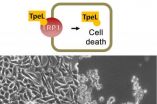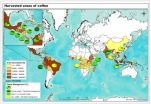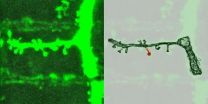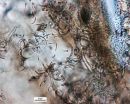(Press-News.org) RICHLAND, Wash. – Geologic and soil processes are to blame for significant baseline levels of arsenic in soil throughout Ohio, according to a study published recently in the Journal of Environmental Quality.
The analysis of 842 soil samples from all corners of Ohio showed that every single sample had concentrations higher than the screening level of concern recommended by the U.S. Environmental Protection Agency. The findings should not alarm the public, say the authors, who note that regulatory levels typically are set far below those thought to be harmful. Rather, the findings pose a real challenge for regulators, who must determine what levels should trigger action when natural arsenic levels everywhere are above suggested screening standards.
The researchers found that the patterns of arsenic in Ohio soils are most closely related to the arsenic content of the underlying bedrock, which was formed approximately 250 to 300 million years ago. Glacial and soil processes have modified the landscape since.
"The distribution of arsenic throughout Ohio appears to be the result of natural patterns," said first author Erik Venteris of the Department of Energy's Pacific Northwest National Laboratory, who was with the Division of Geological Survey of the Ohio Department of Natural Resources when the study was done.
Researchers from PNNL, Ohio State University, and the state of Ohio's Division of Geological Survey did the study, one of the most thorough analyses of arsenic levels to date over a broad area.
Arsenic and Old Ohio
Scientists have long known that arsenic levels in Ohio and many other parts of the world are consistently high, even beyond spikes of the element due to smelters, herbicide use, and other human activity.
Arsenic's reputation as a poison is warranted. High levels can cause cancer, neuromuscular damage, skin diseases, and death. People can be exposed to arsenic found in the soil through drinking water, through the foods they eat, and even through minute amounts of dirt they unknowingly ingest each day. But like many compounds, the element – abundant in Earth's crust – does little or no measurable harm at very low levels.
Deciding at just what level arsenic is harmful, and when regulators should take action to lower levels, is tremendously difficult.
The team set out to get a comprehensive picture of arsenic levels across the state, studying samples from areas with minimal human activity. For example, arsenic has been used for decades as a wood preservative and in pesticides and herbicides, so soil samples near fence posts and orchards were avoided.
The team analyzed samples from soil and stream sediments from across the nearly 45,000 square miles of land that make up Ohio. They included soil samples that the U.S. Geological Survey collected as part of the National Geochemical Survey and from a previous study related to uranium exploration. The analysis included two soil samples each from 348 sites throughout Ohio (one sample taken from 6-12 inches below the surface and another from 12-24 inches deep) and 144 sediment samples from streams.
Findings
Overall, arsenic in samples ranged from 2 to 45.6 parts per million by weight, with an average of 9.69 parts per million, compared to the U.S. EPA's screening standard of 0.39 parts per million. Very few samples had less arsenic than 3 parts per million; samples more than 10 parts per million were very common; and levels of more than 20 parts per million were common for central Ohio.
"When every soil sample has more arsenic than the recommended screening level, it may be time to re-evaluate those regulatory levels and to think about how best to interpret the data," said co-author Nicholas Basta, professor of Soil and Environmental Chemistry at Ohio State.
Yesterday's rocks, today's soil
The study found that bedrock created from about 250 to 425 million years ago, a time when Ohio was positioned near the equator and under warm tropical sea waters for much of the time, is the source of significant levels of arsenic in soils throughout the state.
Some parts of the state had consistently higher levels, including the central, western and northeastern Ohio; areas with lower levels included northwestern and southwestern Ohio.
The authors say that as rocks weathered over time to create the soils, the rocks released arsenic that became part of the soil. They believe that other conditions, such as consistently wet soils, reduced levels of arsenic in some areas of the state, such as northwest Ohio.
"Many processes can break down bedrock, spread the material, and potentially mobilize the arsenic so it leaches out," said Venteris. "How much arsenic is present in a given location depends on what was originally in the bedrock and how that rock has been altered over time through complex erosion and chemical weathering processes. The result is that arsenic levels vary significantly – but predictably – within a region."
Influence of industrial activity
The team found no correlation between industrial activity and arsenic levels. Soils from some industrial areas in regions with high baseline arsenic levels, such as Columbus, Cleveland and Youngstown, had higher levels, for instance, while soils near other industrial areas like Cincinnati, Dayton and Toledo in the southwestern or northwestern parts of the state had lower levels.
Levels from soil samples 18 to 24 inches below the surface were on average almost 50 percent higher than levels in the topsoil – more evidence that high levels are due to geological conditions and not human activity, Venteris said.
Basta said the findings could help regulators weigh risks and remediation efforts involving arsenic. That's frequently a concern when builders create new homes or other structures.
"These findings should be helpful to help evaluate risks properly," said Basta, a faculty member at Ohio State's School of Environment and Natural Resources and an expert on rehabilitating urban soils. "Now we have a good scientific understanding of how the levels throughout Ohio came to be."
INFORMATION:
In addition to Basta and Venteris, authors of the paper include Jerry Bigham, professor emeritus of environment and natural resources at Ohio State, and Ron Rea, formerly with Ohio's Division of Geological Survey. The work was supported by the Ohio Department of Natural Resources (Division of Geological Survey) and the U.S. Geological Survey.
Reference: Erik R. Venteris, Nicholas T. Basta, Jerry M. Bigham and Ron Rea, Modeling spatial patterns in soil As to estimate natural baseline concentrations, Journal of Environmental Quality, Feb. 24, 2014, doi:10.2134/jeq2013.11.0459.
Significant baseline levels of arsenic found in Ohio soils are due to natural processes
Setting regulatory standards is challenging when levels are consistently high, authors say
2014-04-16
ELSE PRESS RELEASES FROM THIS DATE:
Preterm births, multiples, and fertility treatment
2014-04-16
While it is well known that fertility treatments are the leading cause of increases in multiple gestations and that multiples are at elevated risk of premature birth, these results are not inevitable, concludes an article in Fertility and Sterility. The article identifies six changes in policy and practice that can reduce the odds of multiple births and prematurity, including expanding insurance coverage for in vitro fertilization (IVF) and improving doctor-patient communications about the risks associated with twins.
Financial pressures provide a powerful incentive for ...
Gate for bacterial toxins found
2014-04-16
Prof. Dr. Dr. Klaus Aktories and Dr. Panagiotis Papatheodorou from the Institute of Experimental and Clinical Pharmacology and Toxicology of the University of Freiburg have discovered the receptor responsible for smuggling the toxin of the bacterium Clostridium perfringens into the cell. The TpeL toxin, which is formed by C. perfringens, a pathogen that causes gas gangrene and food poisoning. It is very similar to the toxins of many other hospital germs of the genus Clostridium. The toxins bind to surface molecules and creep into the body cell, where they lead to cell death. ...
Scientists explain how memories stick together
2014-04-16
LA JOLLA—Scientists at the Salk Institute have created a new model of memory that explains how neurons retain select memories a few hours after an event.
This new framework provides a more complete picture of how memory works, which can inform research into disorders liked Parkinson's, Alzheimer's, post-traumatic stress and learning disabilities.
"Previous models of memory were based on fast activity patterns," says Terry Sejnowski, holder of Salk's Francis Crick Chair and a Howard Hughes Medical Institute Investigator. "Our new model of memory makes it possible to ...
Shade grown coffee shrinking as a proportion of global coffee production
2014-04-16
The proportion of land used to cultivate shade grown coffee, relative to the total land area of coffee cultivation, has fallen by nearly 20 percent globally since 1996, according to a new study by scientists from The University of Texas at Austin and five other institutions.
The study's authors say the global shift toward a more intensive style of coffee farming is probably having a negative effect on the environment, communities and individual farmers.
"The paradox is that there is greater public interest than ever in environmentally friendly coffee, but where coffee ...
Synapses -- stability in transformation
2014-04-16
This news release is available in German. Synapses are the points of contact at which information is transmitted between neurons. Without them, we would not be able to form thoughts or remember things. For memories to endure, synapses sometimes have to remain stable for very long periods. But how can a synapse last if its components have to be replaced regularly? Scientists from the Max Planck Institute of Neurobiology in Martinsried near Munich have taken a decisive step towards answering this question. They have succeeded in demonstrating that when a synapse is formed, ...
Scratching the surface: Microbial etchings in impact glass and the search for life on Mars
2014-04-16
Boulder, Colo., USA – Haley M. Sapers and colleagues provide what may be the first report of biological activity preserved in impact glass. Recent research has suggested that impact events create novel within-rock microbial habitats. In their paper, "Enigmatic tubular features in impact glass," Sapers and colleagues analyze tubular features in hydrothermally altered impact glass from the Ries Impact Structure, Germany, that are remarkably similar to the bioalteration textures observed in volcanic glasses.
The authors note that mineral-forming processes cannot easily ...
Cancer drugs block dementia-linked brain inflammation, UCI study finds
2014-04-16
Irvine, Calif., April 16, 2014 — A class of drugs developed to treat immune-related conditions and cancer – including one currently in clinical trials for glioblastoma and other tumors – eliminates neural inflammation associated with dementia-linked diseases and brain injuries, according to UC Irvine researchers.
In their study, assistant professor of neurobiology & behavior Kim Green and colleagues discovered that the drugs, which can be delivered orally, eradicated microglia, the primary immune cells of the brain. These cells exacerbate many neural diseases, including ...
Recycling industrial waste water
2014-04-16
A research group composed of Dr. Martin Prechtl, Leo Heim and their colleagues at the University of Cologne's Department of Chemistry has discovered a new method of generating hydrogen using water and formaldehyde. The generation of hydrogen from liquids is of particular interest when it comes to fuel cell technologies. The results of the project, entitled "Selective and mild hydrogen production using water and formaldehyde", have recently been published in the journal Nature Communications.
Among other applications, the new approach can be used to recycle industrial ...
Research uncovers DNA looping damage tied to HPV cancer
2014-04-16
It's long been known that certain strains of human papillomavirus (HPV) cause cancer. Now, researchers at The Ohio State University have determined a new way that HPV might spark cancer development – by disrupting the human DNA sequence with repeating loops when the virus is inserted into host-cell DNA as it replicates.
Worldwide, HPV causes about 610,000 cases of cancer annually, accounting for about five percent of all cancer cases and virtually all cases of cervical cancer. Yet, the mechanisms behind the process aren't yet completely understood.
This study, recently ...
New type of barcode could make counterfeiters' lives more difficult
2014-04-16
Counterfeiters, beware! Scientists are reporting the development of a new type of inexpensive barcode that, when added to documents or currency, could foil attempts at making forgeries. Although the tags are easy for researchers to make, they still require ingredients you can't exactly find at the local hardware store. Their report appears in the Journal of the American Chemical Society.
Xiaogang Liu and colleagues explain that scientists have used fluorescent and DNA-based barcodes, or tags of known composition and sequence, in attempts to develop tests for cancer and ...
LAST 30 PRESS RELEASES:
Numbers in our sights affect how we perceive space
SIMJ announces global collaborative book project in commemoration of its 75th anniversary
Air pollution exposure and birth weight
Obstructive sleep apnea risk and mental health conditions among older adults
How talking slows eye movements behind the wheel
The Ceramic Society of Japan’s Oxoate Ceramics Research Association launches new international book project
Heart-brain connection: international study reveals the role of the vagus nerve in keeping the heart young
Researchers identify Rb1 as a predictive biomarker for a new therapeutic strategy in some breast cancers
Survey reveals ethical gaps slowing AI adoption in pediatric surgery
Stimulant ADHD medications work differently than thought
AI overestimates how smart people are, according to HSE economists
HSE researchers create genome-wide map of quadruplexes
Scientists boost cell "powerhouses" to burn more calories
Automatic label checking: The missing step in making reliable medical AI
Low daily alcohol intake linked to 50% heightened mouth cancer risk in India
American Meteorological Society announces Rick Spinrad as 2026 President-Elect
Biomass-based carbon capture spotlighted in newly released global climate webinar recording
Illuminating invisible nano pollutants: advanced bioimaging tracks the full journey of emerging nanoscale contaminants in living systems
How does age affect recovery from spinal cord injury?
Novel AI tool offers prognosis for patients with head and neck cancer
Fathers’ microplastic exposure tied to their children’s metabolic problems
Research validates laboratory model for studying high-grade serous ovarian cancer
SIR 2026 delivers transformative breakthroughs in minimally invasive medicine to improve patient care
Stem Cell Reports most downloaded papers of 2025 highlight the breadth and impact of stem cell research
Oxford-led study estimates NHS spends around 3% of its primary and secondary care budget on the health impacts of heat and cold in England
A researcher’s long quest leads to a smart composite breakthrough
Urban wild bees act as “microbial sensors” of city health.
New study finds where you live affects recovery after a hip fracture
Forecasting the impact of fully automated vehicle adoption on US road traffic injuries
Alcohol-related hospitalizations from 2016 to 2022
[Press-News.org] Significant baseline levels of arsenic found in Ohio soils are due to natural processesSetting regulatory standards is challenging when levels are consistently high, authors say






